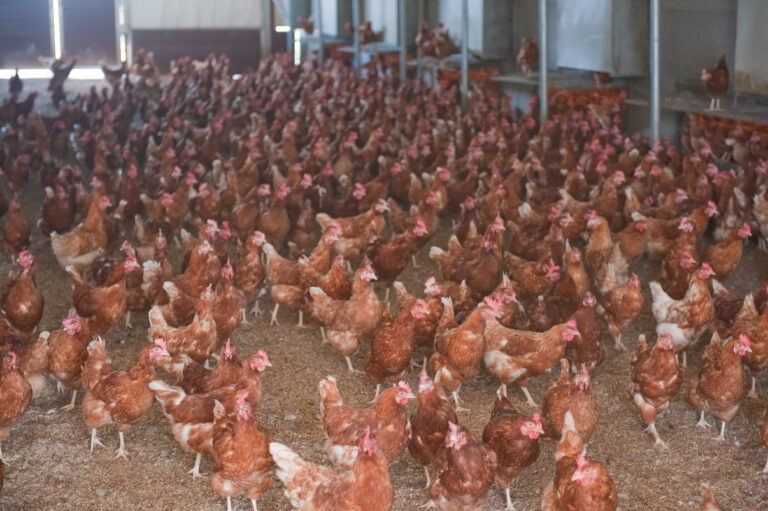The Food Standards Agency (FSA) has today published the last set of results from its third survey of campylobacter contamination in fresh shop-bought UK-produced chickens.
The full year’s results show that on average, across the entire market, 6.5% of chickens tested positive for the highest level of contamination, (over 1,000 colony forming units per gram cfu/g). This is down from 19.7% in 2014/15 when the survey began.
Full results from the third annual survey
This is the full year’s results from the FSA’s third annual retail survey – August 2016 to July 2017 based on a total of 3,980 whole fresh chickens sampled at retail.
Full results from the survey found:
The figure for high-level campylobacter prevalence (more than 1,000 cfu/g) among the top nine retailers (based on market share) was 5.6%.
The ‘Others’ group, consisting of smaller retailers and butchers, had a significantly higher prevalence at 17.1% compared to the top nine retailers.
The retailers with significantly lower prevalence than the average among all retailers were Morrisons (2.9%), Tesco (4.2%) and Waitrose (2.7%).
There was a significant fall in the percentage of chickens positive for campylobacter at any level down from 73.2% in 2014/15 to 54% in 2016/17.
In the last period of the third annual survey, April – July 2017, based on a total of 1,437 chicken samples 5.9% of chickens had high levels of campylobacter (over 1,000 cfu/g) down from 20.1% for the same period in 2014.
Changes to future campylobacter retail surveys
On 21 September, the FSA announced changes to its annual campylobacter retail survey. The top nine retailers (based on market share) will now publish their own campylobacter results on their consumer websites and no longer be included in the FSA’s annual survey.
The sampling and analyses they carry out will be in accordance with robust protocols laid down by the FSA, so all results will still be comparable. We will also have access to the raw data to verify samples and determine industry averages and we will have the right to comment publicly on the results.
The FSA’s annual survey will in future concentrate on smaller retailers, independent traders and market stalls as these are more likely to be supplied by smaller processors.
Heather Hancock, Chair of the FSA, said: “The full year’s results from our third annual survey show the significant progress the industry has made in reducing campylobacter levels in chicken, compared with their starting point. The major retailers are now taking on the responsibility to publish their own results, according to a protocol we have agreed. This is a welcome step towards greater transparency.
“Whilst we will keep a close eye on the performance of bigger retailers, it means the FSA can now focus our efforts on smaller establishments, where we haven’t yet seen the same level of improvement and where more progress needs to be made.”
Background
Foodborne campylobacter is the biggest cause of food poisoning in the UK. The FSA has been testing chickens for campylobacter and publishing the results since February 2014 as part of its campaign to bring together the whole food chain to tackle the problem.
All the results in the following table are taken from the Official Statistics report for the survey, which can be found at the link below. This report gives a full explanation of the results and background to the methodology.
All chickens, regardless of which retail outlet they are bought from, are at risk of being contaminated with campylobacter. The FSA and industry have together focused on reducing campylobacter levels and a number of interventions have been trialled, introduced and refined in recent years.
The table below shows the overall prevalence of campylobacter on chickens sampled by retailer: Aug 2016 to July 2017 (the full year 3 survey)
| Retailer | No. of samples | % skin samples over 1,000 cfu/g Campylobacter | % skin samples positive for Campylobacter |
| Aldi | 409 | 6.0 (3.7 – 8.4) | 56.7 (51.9 – 61.6) |
| Asda | 387 | 7.6 (5.1 – 10.3) | 57.1 (52.1 – 62.0) |
| Co-op | 406 | 4.4 (2.5 – 6.6) | 53.0 (48.1 – 57.9) |
| Lidl | 408 | 7.1 (4.7 – 9.6) | 55.7 (50.9 – 60.5) |
| M&S | 407 | 6.4 (4.2 – 8.9) | 62.7 (58.1 – 67.3) |
| Morrisons | 392 | 2.9 (1.4 – 4.6) | 51.1 (46.2 – 56.1) |
| Sainsbury’s | 395 | 5.5 (3.4 – 7.8) | 52.8 (47.9 – 57.7) |
| Tesco | 404 | 4.2 (2.4 – 6.2) | 46.7 (41.9 – 51.5) |
| Waitrose | 409 | 2.7 (1.1 – 4.4) | 38.6 (33.9 – 43.3) |
| Others | 363 | 17.1 (13.1 – 21.3) | 71.6 (66.9 – 76.2) |
| All | 3,980 | 6.5 (5.6 – 7.3) | 54.0 (52.3 – 55.8) |
95% confidence intervals are shown in brackets. These reflect the uncertainty in the estimate and provide a range of values within which the true prevalence will lie 95% of the time.


